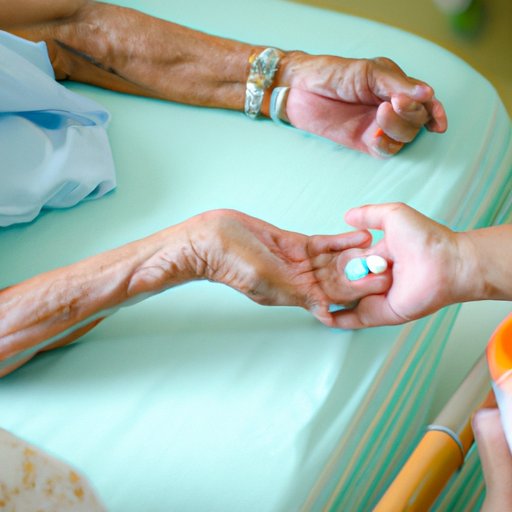I. Introduction
Medication safety is a critical concern for care homes, especially for elderly patients who may have complex medical needs. Even a small medication error can have serious consequences, leading to hospitalization or even death. This article explores the topic of medication safety in care homes, provides examples of common mistakes, and offers strategies to reduce medication errors.
II. The Significance of Medication Safety in Care Homes
Medication errors are a serious problem in care homes. According to a study published in the Journal of the American Geriatrics Society, up to 40% of medication orders for older adults are incorrect or incomplete. Additionally, medication errors in care homes are one of the most common reasons for hospitalization, accounting for up to 30% of all hospital admissions. Some of the most common medication errors include giving the wrong drug, incorrect dosage, or failure to monitor for adverse drug reactions.
Experiencing a medication error can be a traumatic event for elderly patients, leading to loss of independence, decline in health, or even death. For this reason, medication safety in care homes is of utmost importance.
III. Common Causes of Medication Errors in Care Homes
There are many factors that contribute to medication errors in care homes, including communication breakdowns among staff, inadequate staffing levels, and lack of proper training for staff.
Miscommunication among staff is a common cause of medication errors. Care home staff may be juggling many tasks at once or working different shifts, which can lead to incomplete or lost information. Additionally, staff may not feel comfortable speaking up if they see a potential error, leading to a lack of critical feedback and collaboration among the care team.
Inadequate staffing levels can also contribute to medication errors, as staff may be overworked and stressed, leading to mistakes. Finally, staff may not have proper training in medication management, which can lead to confusion about dosages, side effects, and interactions.
IV. Strategies to Reduce Medication Errors in Care Homes
Fortunately, there are strategies that care homes can take to reduce medication errors and promote medication safety. Employing these strategies can help improve communication, reduce the risk of errors, and increase staff confidence.
One effective strategy is to develop clear medication administration protocols. This can involve creating standard processes for medication ordering, dispensing, and administration, as well as regularly reviewing medication orders for accuracy and completeness. Additionally, care homes can implement technology solutions such as electronic medication administration records (eMARs), which can help to improve accuracy and reduce errors.
Improving communication among staff members is also crucial to medication safety. Care homes can encourage staff to speak up if they see a potential error, and promote collaboration among the care team. Providing regular training on communication and teamwork can also be effective.
Another strategy is investing in technology to improve accuracy. Some care homes have implemented automated dispensing machines or barcode scanning systems to help reduce the risk of medication errors.
V. Real-Life Examples of Medication Errors in Care Homes
Medication errors can have serious consequences for elderly patients, as illustrated by several real-life case studies. In one case, a nursing home resident was given the wrong medication for several days, leading to complications that required hospitalization. In another case, a patient developed a severe allergic reaction to a medication that was incorrectly prescribed, resulting in an extended hospital stay. These examples highlight the critical importance of medication safety in care homes and the devastating consequences of medication errors.
VI. Highlighting Successful Medication Safety Initiatives in Care Homes
Despite the challenges faced by care homes in promoting medication safety, there are success stories in reducing errors. Some care homes have implemented initiatives such as staff training, automated medication dispensing systems, and regular reviews of medication orders to promote safety. For example, one care home was able to reduce medication errors by 50% by implementing a combination of staff training and technology solutions.
Another successful initiative involved simplifying medication administration protocols and providing staff with clear guidelines. This effort led to a significant decrease in medication errors and improved patient outcomes.
VII. Conclusion
Reducing medication errors in care homes is crucial for the health and well-being of elderly patients. By recognizing the common causes of medication errors, implementing effective strategies, and learning from real-life examples and successful initiatives, care homes can promote medication safety and avoid the devastating consequences of medication errors.
Let us take action today to prioritize medication safety in care homes for the benefit of elderly residents.
(Note: Is this article not meeting your expectations? Do you have knowledge or insights to share? Unlock new opportunities and expand your reach by joining our authors team. Click Registration to join us and share your expertise with our readers.)
